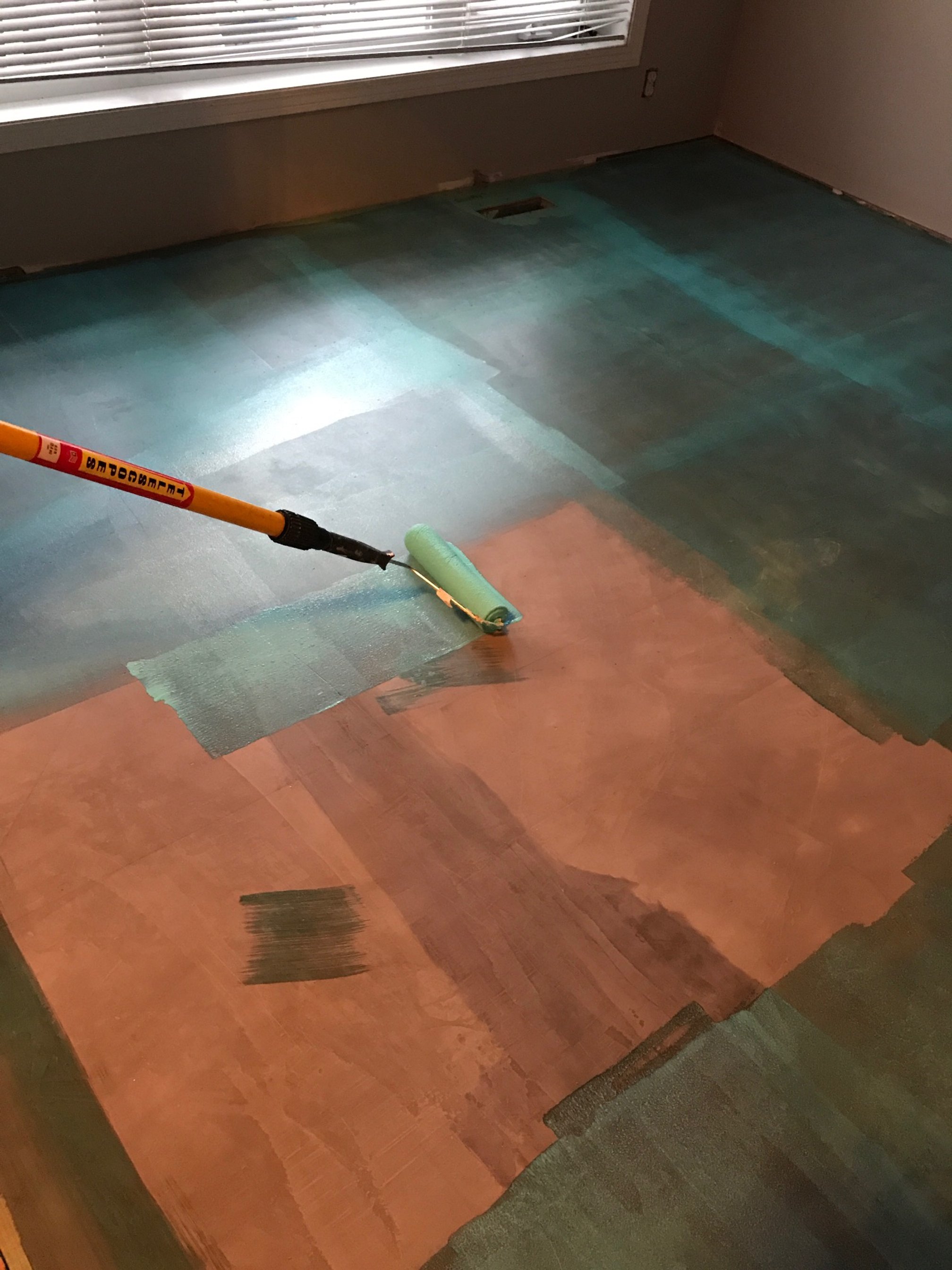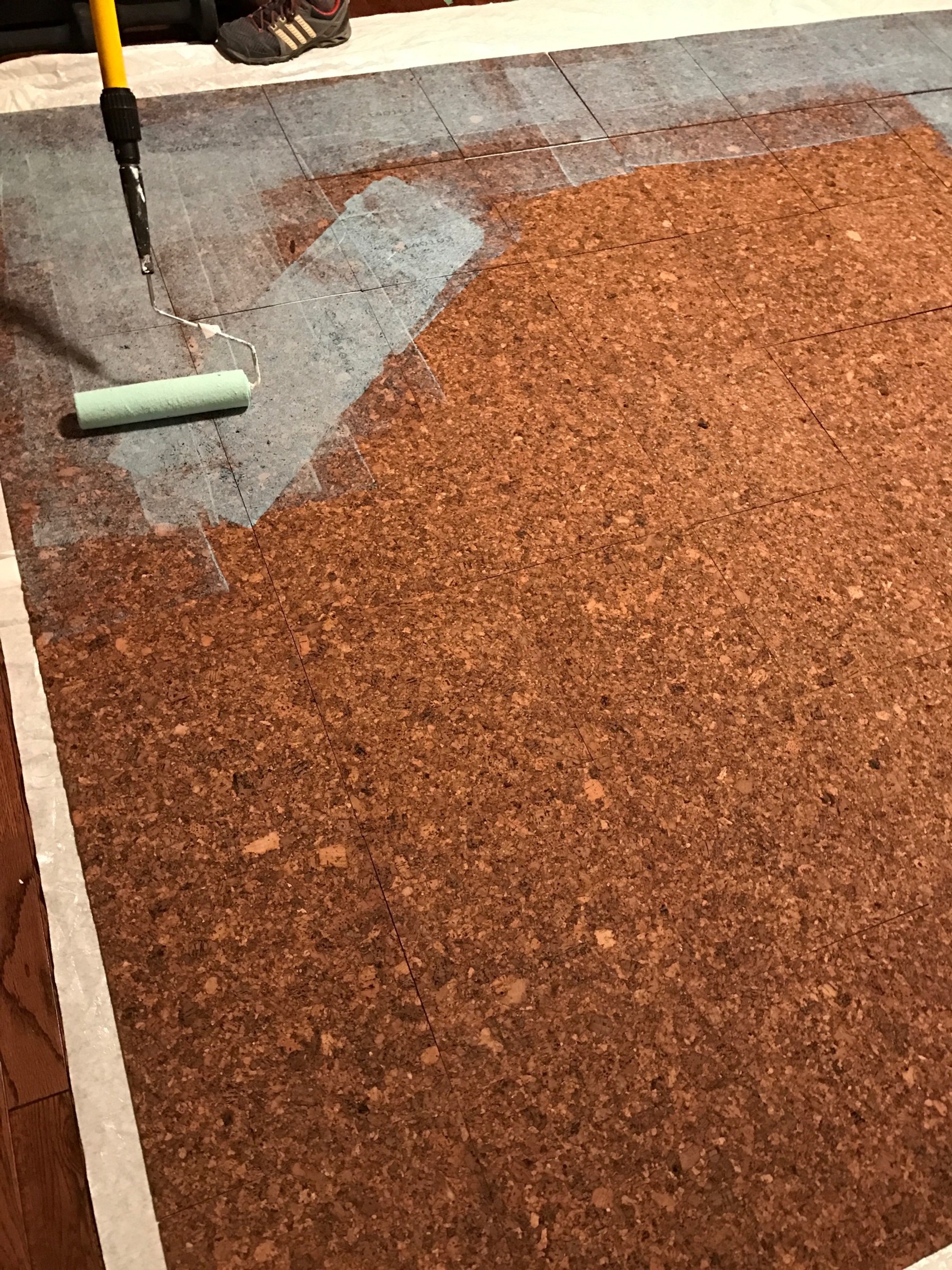Embarking on a room re-do can be an exciting yet daunting prospect. From figuring out a budget to deciding on what key aspects of the space are most important to you and your family, many decisions need to be made. (Recently we painted our living area and it took nearly two weeks to get three people to agree on which color white)
Here is one of our favorite before and after cork flooring room make-overs to spark your inspiration.
A Multi-purpose Entry Way
When you welcome someone to your home, you want them to feel comfortable and make a good impression. This multi-purpose room off of this family's entryway had seen better days; the worn and stained carpet had to go.
They decided on the Madrid Glue Down Flooring Tiles with Custom Beveled Edges. This rich dark tile will add a grounding gleam to the small room and work with many color pallets. The beveling of the tiles adds an extra level of visual interest. In addition to being visually pleasing, cork flooring serves a multi-function purpose.
Warm: The cork's honeycomb cellular structure makes it a natural insulator, keeping the floors close to room temperature.
Comfortable: The additional air trapped in this honeycomb structure ensures the flooring has more support for your feet, making it perfect for anywhere you need to stand for long periods.
The Transformation
With the decisions made, now it's time to get down into the dirty work!
Preparation:
The work got started by cutting and ripping up the old and stained carpet. With the carpet up, it was time to inspect the subfloor. For the best results, the subfloor should be level, smooth, and in good condition before installation. Any hollow spots, bumps, or lumps in the subfloor must be repaired or removed for best results. If the subfloor is not level, we recommend using a leveling compound to prevent "telegraphing" of the grooves through the cork tiles.
Once it is established that the subfloor is in good condition, ensure that the subfloor is free of dirt, grease, wax, or any other substance that would hinder the adhesive bond.
For this project, we installed a layer of QuietCork Underlayment over the existing subfloor to add an additional layer of thermal and acoustic insulation. A new sanded plywood subfloor was installed over this layer to ensure the best results.
*Pro Tip- Bring the new cork floor tiles into the room at least 72 hours before installation to allow the tiles to acclimatize.
Installation:
Recommended Tools:
Utility Knife with Extra Blades
Metal Straight Edge
Cutting Board/Mat
Chalk Line
Contact Cement
Paint Rollers and Pan
J-Roller
Vacuum Cleaner
*Pro Tip- If you will be painting the room in the transformation, we recommend doing this before you install your new floor. This makes the prep and clean-up for painting much easier!
With the new subfloor in place, the real work can now begin!
Once the subfloor is complete, it's time to start prepping for installation. Since the cork tiles are a natural product, each tile is unique. For this reason, we recommend laying out your tiles before installing them. This layout is the fun part! The homeowners got to be creative as we placed the tiles in the pattern we liked best, like a jig-saw puzzle with no wrong answers.
Normally, we recommend staggering your seams, but with the custom beveling on these tiles, they chose a diamond pattern for this room.
*Pro Tip - When laying out your tiles, remember to leave a 1.4in expansion gap along walls, cabinets, and adjoining floors. This gap will allow the tiles to expand with changes in heat and humidity. These gaps will be covered by moldings or transition strips at the end of the installation.
Once you know your layout, mark any guidelines using the chalk on the subfloor and, if needed, cut your tiles and door jams.
After you have finished all your cutting, vacuum your subfloor very carefully. Any leftover dust or material will show up as bumps in your finished floor, so be sure you get everything up!
Since we chose a glue down floor for this project, we applied water-based contact cement to both the back of the tiles and the subfloor. We recommend using a paint roller and pan to make this process go more quickly.
After waiting for the contact cement to completely dry on both surfaces, it's time to install the cork flooring! Because contact cement is a powerful adhesive, once the tiles are pressed on the subfloor, it becomes challenging to move them, so ensure you are placing the tile in the correct place. Once the tile has been hand pressed to the subfloor, use the J Roller to roll each tile as it is installed. These tiles can be walked on once installed; just avoid heavy furniture for 24 hours after the floors are fully finished.
Once all the tiles are in place, we recommend using a 100-pound roller over all tiles to ensure a firm adhesion.
Finishing
The Madrid tile we selected was unfinished, so we needed to apply three coats of water-based polyurethane to finish it.
We started by applying the first coat to the unfinished floor using a roller.
Once the first coat has completely dried, we applied the first coat of water-based polyurethane in the same manner.
After again waiting for it to dry completely, we applied the second and final coat of polyurethane.
Once the final coat was dry, we installed the molding and furnished the room!
What a transformation!!! The dark tiles with flecks of lighter browns and reds bring a sophisticated air to the room while keeping it functional!
Best of all, these floors are easy to care for and do not require special cleaning products!
Key Steps
|
Recommended Tools:
|










